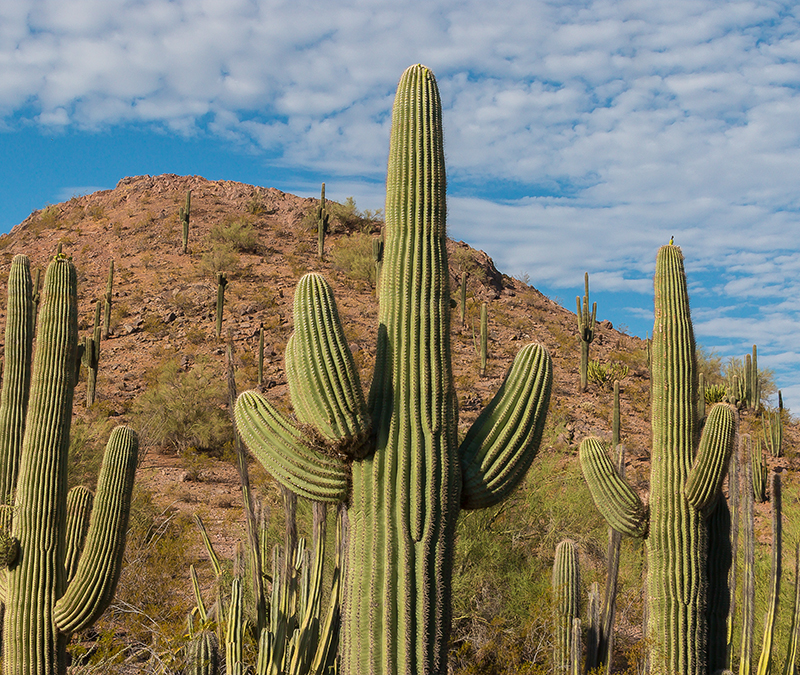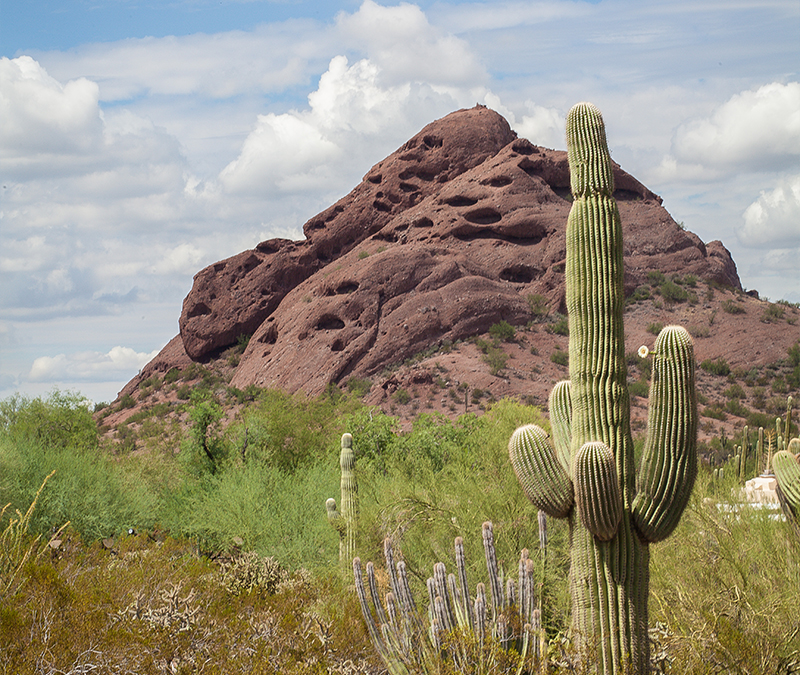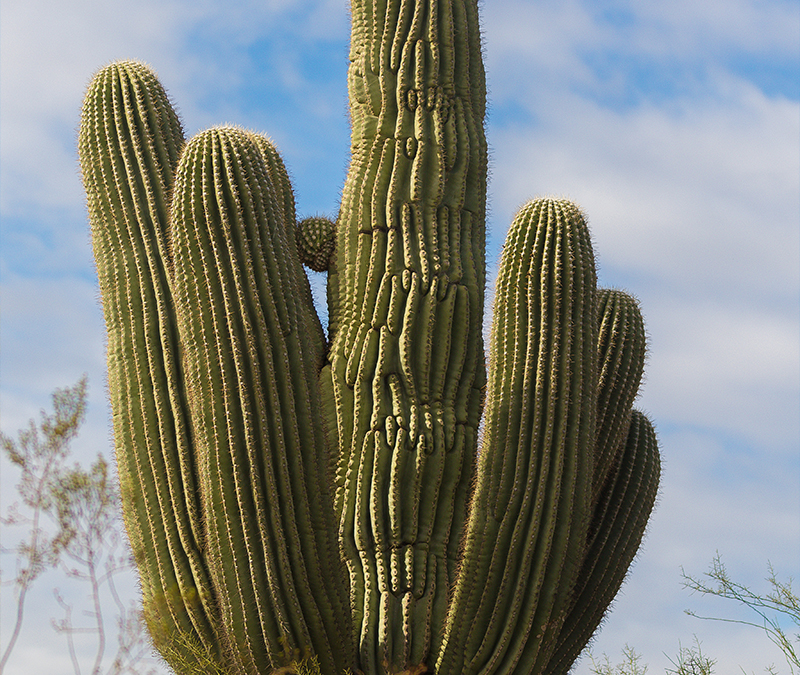Saguaros Under Threat
No feature of the Sonoran Desert is more recognizable than the iconic saguaro cactus, soaring in height above all other species of cactus in Southwest West. Yet, these desert sentinels are under threat, due to a rapidly changing climate that is leading to intense heat waves and drought across the Sonoran Desert region.
A recent article published in the Washington Post, “Saving the West’s Most Iconic Cactus from Climate Change”, published on March 10, 2021, underscores the current threats facing saguaros.
As the article points out, last summer was a double whammy for saguaros across Arizona. Not only did the monsoon season fail to deliver the amount of moisture that saguaros thrive on for growth and survival, last summer was also among the hottest on record. Even though massive internal water storage buffers saguaros from the effects of extreme drought, last summer was still too dry and hot for many saguaro plants.
Reports of falling saguaros, or arms dropping from large saguaros were common in and around Phoenix throughout the summer. The skin of a saguaro is constructed of living cells that contain a high concentration of a water-holding substance called pectin. These cells provide mechanical support that enables saguaros to maintain their upright stature. When drought persists over long periods, these cells lose water and the mechanical support provided by the skin sometimes fails, causing the arms to fall or an entire saguaro to topple. Another dry and hot summer could lead to more falling saguaros around Phoenix.
Even before last summer’s drought and heat wave kicked into high gear, fires across the state – fueled, in part, by dense ground cover of invasive African grasses – killed thousands of saguaros. If left unchecked, invasive grasses, combined with climate change, may have dire consequences to saguaros across large portions of Arizona. Fortunately, efforts are ongoing to mechanically remove invasive grasses from prime saguaro habitats.
For example, Desert Defenders, a citizen science program of the Central Arizona Conservation Alliance (CAZCA) is actively finding, mapping and removing invasive species in local parks and preserves in central Arizona. These and similar efforts around the state aim to prevent the rapid spread of wildfires in some of the most pristine saguaro habitats in the northern Sonoran Desert. Ongoing efforts to study, restore, and protect saguaro plants and the habitat they rely on offers cautious optimism that the saguaro cactus will remain the Sonoran Desert’s most iconic plant species well into the future.











